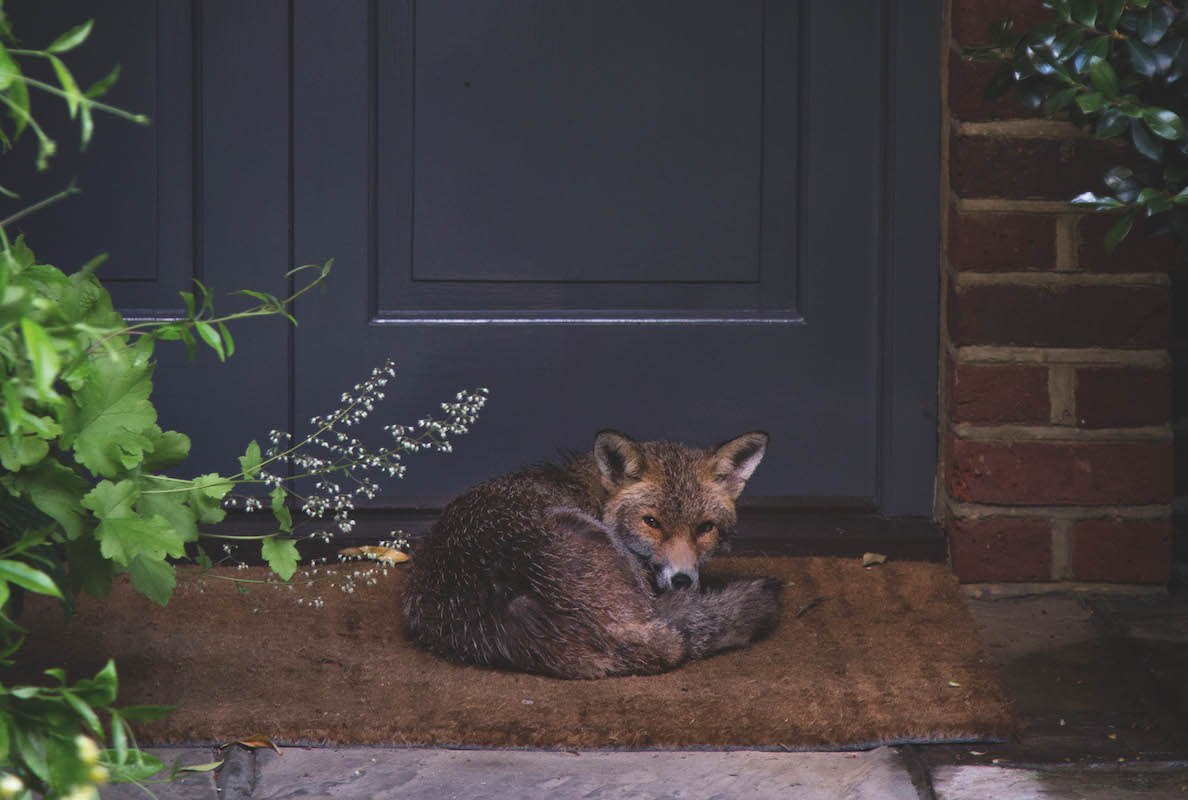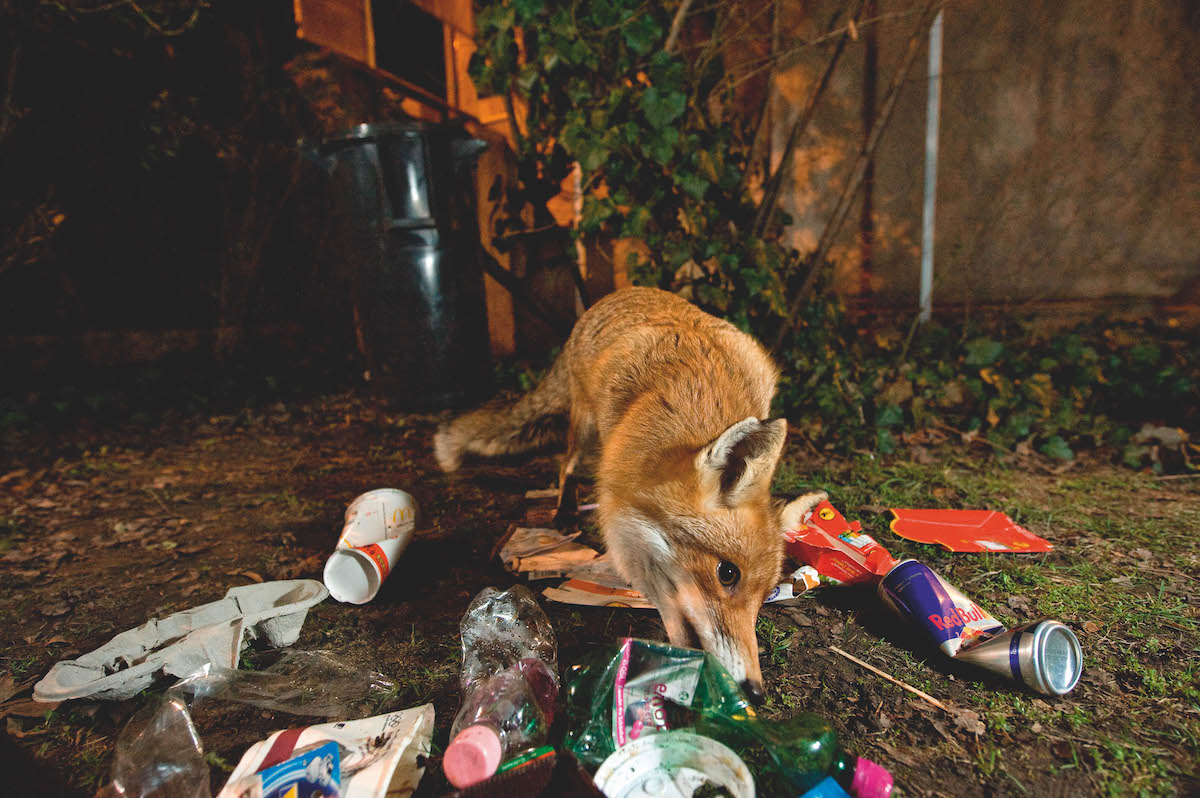News
Town foxes and country foxes: are they different?
Would you like to speak to our readers? We offer sponsored articles and advertising to put you in front of our audience. Find out more. Photo Taken In London, United Kingdom
Photo Taken In London, United Kingdom
’’Your dogs won’t like it when they come to stay; that kennel stinks,” said my father almost 40 years ago. He had given up keeping dogs by then, but there was still a kennel at the bottom of his garden so he could board mine when I was going away.
Dad was a keen vegetable gardener and if there was one thing that would really wind him up it was the neighbours’ cats, or in this case a vixen, digging in his carefully prepared onion bed. This particular year the crop rotation brought the onions right alongside the kennel, so he had “left a lamb bone from Sunday lunch in it, rigged a figure-of-four trip to hold the door open, and stretched a bungee to snap it shut”. One night was all it took, and bingo.
When we moved into Ash Vale in 1963, it seemed like a quiet village in rural Surrey, even if there were neighbours who commuted to London every day on the train. Twenty years later and pretty much all the spare land had been developed into housing estates, leaving the adjacent Army training ground as the only real green space. Suddenly we were in the perfect country for town foxes. (Watch this video on culling urban foxes.)

Urban foxes can be a nuisance, as they spread rubbish over a large area while looking for food
Phenomenon
It is easy to think that town foxes are a new phenomenon, but records of foxes in towns go back to the 1890s in Switzerland and the 1930s in London. What brought them there? There are lots of urban folk who love to have foxes about, but those who don’t often ask why they don’t go back to the countryside, “where they belong”. (What diseases could my dog pick up from foxes?
In many ways, the answer lies in the fox’s enormous adaptability. Between World War I and II there was a boom in house building and, with more rapid road and rail transport, it became possible to commute to work. Suddenly, new housing developments began to move out into the countryside. So there is a very valid argument that foxes did not move into town; rather the towns spread out to envelop their territory. With big gardens and lots of space still available to forage in, they simply adapted to a new way of life in suburbia.
Once the naturally cautious foxes began to realise that humans were no great threat in this environment, they began to get bolder. Over time, an animal that would never be so daft as to venture into a cage trap, no matter how enticing the bait, began to throw some of its caution to the wind.

As they infiltrate our towns, foxes are losing their fear of humans
I can remember a vixen 20-odd years ago that would doze away the day squeezed into the suntrap between my father’s fruit cage and his boundary fence. As I was a relative stranger, it would watch me carefully as I walked down the garden path to chuck the vegetable peelings on to the compost heap, but it would not even open an eye for my mother or father. From this sort of situation, it is but a short step to becoming a properly urban fox that goes to town for the nightlife each evening, hunting for food leftovers in bin bags at the back of restaurants and fast-food outlets.
These days we mostly live with urban and suburban foxes. Public opinion about them is very much split; there are those who worry about the hygiene risk from scats in their garden, or that a particularly bold urban fox will come into their house and savage a baby. But there are also lots of people who love to see them, whether that be scavenging under the bird table or coming for food that has been put out specially for them.
So it is hardly surprising that most town councils preach tolerance, although they are also perhaps motivated by the fact that this is by far the cheapest option available for them too.
Once upon a time it was not so simple and urban foxes were considered a problem. In the first two decades after World War II many town dwellers had more rural origins and regarded foxes as a pest, not least because many of them kept poultry in their gardens.

Cage traps can be a useful tool for foxing, but it is unlikely a rural fox will ever set foot in one
With food rationing still fresh in the memory, MAFF — the Ministry of Agriculture, Fisheries and Food, forerunner to Defra — considered it important to support them. After an early career at sea, my father joined the ranks in the mid-1950s as a ‘pest officer’, and one of his first jobs involved foxing in London.
After an early promotion, he found himself in charge of a small gang with the job of driving and shooting foxes in the quieter corners of town. There were plenty of old bombsites, and patches of scrub next to railway sidings — perfect quiet daytime retreats for foxes so just right for a drive or two.
I remember him coming home after his most successful day, when six Guns accounted for 24, of which he managed eight. I wonder how many people can claim such a high total in one day, whatever the environment.

Urban gardens are increasingly home to foxes – but have our towns reached saturation point?
Behaviour of town foxes
There is a widespread opinion that town foxes are somehow different from their rural counterparts, and in the behavioural sense that is not far from the truth. Throughout my GWCT career, I have been regaled with tales of the effectiveness of this or that cage trap for foxes. After many experiments, and some considerable trying, I can tell you that I have never caught a country fox in a cage. On the other hand, urban pest controllers often find baited cages quite effective.
In terms of diet, too, there are sure to be differences. Town foxes are notorious for scavenging human food scraps, and perhaps ‘stealing’ food put out for dogs, cats and hedgehogs. It is sure to be the case that these items will figure more strongly in their diet compared with those in the countryside. However, there is no such thing as a fox that will turn its nose up at anthropogenic foods.
Recent GWCT studies demonstrate this in the New Forest, where foxes’ predation of waders such curlew and lapwing is a serious problem. The forest is visited by countless tourists each year. As a result, the local foxes find dumped scraps of such things as cheese sandwiches, fish suppers and pizzas easy pickings, meaning that these add up to a significant part of the diet.
This ‘extra’ food supports extra foxes, but that is only part of the story; the forest is a fox-friendly man-made environment in many other ways, with lots of roadkill, for example. This in turn means the unnaturally high population we have created imposes huge predation pressure on the waders and other ground-nesting birds.

Four foxes snoozing in the sun in a London back garden
Dumping
There are widespread reports of vanloads of foxes being dumped in the countryside, but when I ask who has seen it happen, I never hear from a real-life witness. These tales are invariably second-hand and, while I have no doubt that some are dumped by misguided individuals who think they will be better off where they “really belong”, it is my contention that this is pretty rare.
Gamekeepers often report bumping into groups of foxes when out night shooting, saying they are so daft that it is easy to shoot the whole lot as they sit on their haunches wondering what is going on. But have these been dumped? Or are they simply litters of urban cubs that have been squeezed out by population pressure, only to meet their maker before learning the ropes? I think so, and I see this as an indication that the population in most towns is at, or close to, saturation.
In this context, recent GWCT tagging studies have shown some amazing fox movements, such as one that went on a tour from the Avon Valley to Southampton and back; a round trip of more than 40km.
So are town foxes and country foxes different from each other? I do not think so. The most urban foxes in city centres and the most rural ones in the wilds of the Highlands are opposite ends of a spectrum, each adapted to thrive in its own environment, but all part of one remarkably adaptable species.
Related articles
News
Duke's Challenge raises record-breaking £685,000 for GWCT
The shooting community has backed wildlife conservation in spectacular fashion, raising a record-breaking £685,000 for wildlife conservation
By Time Well Spent
News
‘So what exactly do you lot do, then?’
You’d be surprised how many projects staff and volunteers deliver, as well as BASC’s vital work helping members, says Conor O’Gorman
By Time Well Spent
Manage Consent
To provide the best experiences, we use technologies like cookies to store and/or access device information. Consenting to these technologies will allow us to process data such as browsing behavior or unique IDs on this site. Not consenting or withdrawing consent, may adversely affect certain features and functions.
Functional Always active
The technical storage or access is strictly necessary for the legitimate purpose of enabling the use of a specific service explicitly requested by the subscriber or user, or for the sole purpose of carrying out the transmission of a communication over an electronic communications network.
Preferences
The technical storage or access is necessary for the legitimate purpose of storing preferences that are not requested by the subscriber or user.
Statistics
The technical storage or access that is used exclusively for statistical purposes.
The technical storage or access that is used exclusively for anonymous statistical purposes. Without a subpoena, voluntary compliance on the part of your Internet Service Provider, or additional records from a third party, information stored or retrieved for this purpose alone cannot usually be used to identify you.
Marketing
The technical storage or access is required to create user profiles to send advertising, or to track the user on a website or across several websites for similar marketing purposes.





